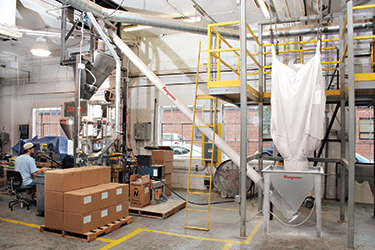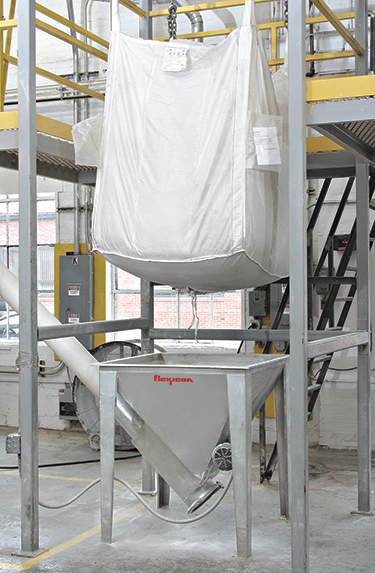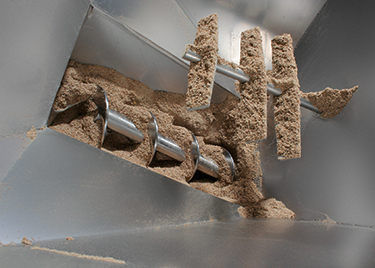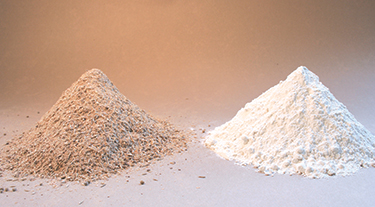 Click to enlarge
Click to enlargeFigures 1 & 2: General views of the RitePak operation. Figure 2 shows a bulk bag being loaded into the floor hopper, from which the product is moved by the flexible screw conveyor to the blender at the upper left.
 Click to enlarge
Click to enlargeFigure 3: A bulk bag is readied for discharge into the floor hopper. The bottom end of the flexible screw conveyor is below and to the left of the hopper.
 Click to enlarge
Click to enlargeFigure 4: A rotating agitation device protruding from the hopper wall promotes uninterrupted flow of material into the intake adapter of the flexible screw conveyor.
 Click to enlarge
Click to enlargeFigure 5: Although flexible screws are generally specified according to the flow characteristics of individual materials, RitePak opted to sacrifice efficiency with some products by using a flat wire screw for all products, until volume demands justify purchasing screws of other configurations.


 Click to enlarge
Click to enlarge Click to enlarge
Click to enlarge Click to enlarge
Click to enlarge Click to enlarge
Click to enlarge